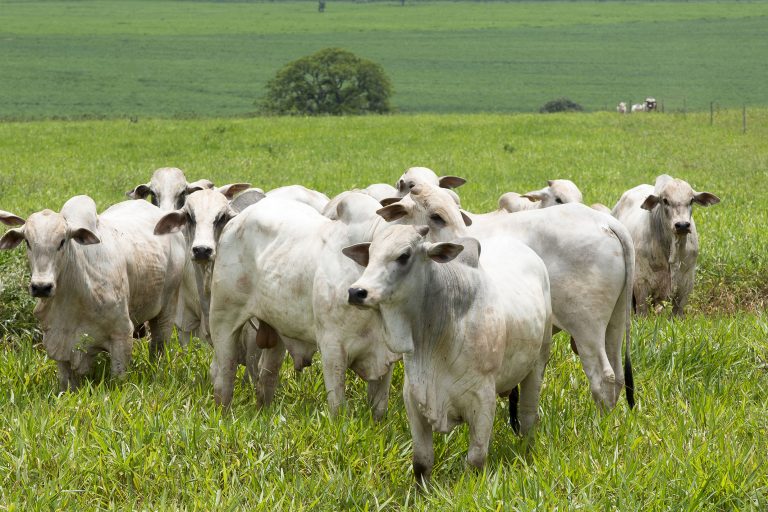Cattle ranching is associated with deforestation in the Amazon region – a large part of the deforested areas have been converted to pasture. This pattern of extensive cattle ranching in the Amazon region is distinguished from the rest of Brazil. While the rest of Brazil uses less pasture over time for livestock production, the opposite is happening in the Amazon region, with an expansion of the pasture area (Figure 1). However, the role of livestock as a cause of deforestation is less evident. On the one hand, the expansion of the activity in the region can
lead to deforestation. On the other hand, land grabbing has used livestock as part of the process of occupation of the territory. In this case, livestock would be more a consequence of and grabbing and deforestation than a cause.
In this context, reducing the conversion of forests into pastureland while protecting or increasing rancher’s livelihoods is one of the main challenges for promoting sustainable development in the Legal Amazon. A key component to achieving this goal is increasing pasture productivity
This brief summarizes the findings from Climate Policy Initiative/Pontifical Catholic University (CPI/PUC-Rio) that calculates the potential for increasing pasture productivity in the Legal Amazon by disseminating technologies that are widely used in just some parts of the region to all parts of the region.
Agronomic models estimate that it is possible to nearly triple Brazil’s pasture productivity through a combination of better management and ranching intensification. From the point of view of public policies, it is important to understand the origin of the productivity gains identified in the agronomic models. Are these gains mainly found in the dissemination of practices already widely used in some high-productivity municipalities? Or do they require the introduction of production models that use practices not widely used in the Legal Amazon? This
distinction has important implications for both the design of agricultural policies and, for example, for training policies and the dissemination of new technologies.
CPI/PUC-Rio researchers show that livestock productivity is quite homogeneous in the region, with a predominance of land extensive production, little use of inputs (based on data from the 2017 Agricultural Census, just 12% of the properties used machines and only 3% used liming to correct the soil for pasture), and overall low levels of productivity. This uniformity translates into small benefits from disseminating the practices already used in the most productive municipalities in the Legal Amazon to the other municipalities in the region. Researchers
calculate that this kind of dissemination could increase the value of its livestock production without increasing deforestation in the Legal Amazon by 17.6-29.4%
Although the estimated productivity gain is relevant, it is substantially less than the potential identified in the agronomic literature. It is also considerably less than the potential for productivity gains in Brazilian agriculture, as calculated in previous work by CPI/PUC-Rio.6 This indicates that the achievement of major productivity gains for cattle ranching in the Legal Amazon will require the introduction of a new business model with the dissemination of techniques and technologies not yet used in scale in the region and also the fight against activities such as land grabbing that has used extensive and not very productive livestock farming as part of its
processes.
